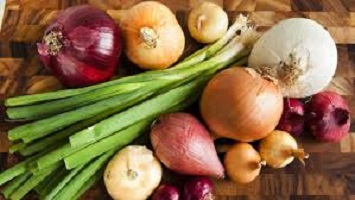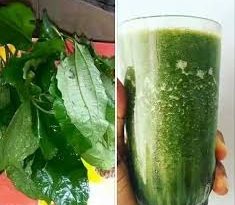Types Of Onions and Their Benefits/Uses
Types Of Onions and Their Benefits/Uses. Please watch >>>>>
Onions belong to the Allium genus, which also contains garlic, shallots, leeks, and chives. These veggies contain a variety of vitamins, minerals, and powerful plant chemicals that have been proven to benefit health in a variety of ways.

Onions are used to improve culinary flavors. Green onions and dried onions are the two types of magic bulbs. The sweet ones are produced in the spring and summer.
These dry onions are divided into spring/summer and fall/winter variants. Green ones are used in soups, salads, and baked potatoes.
These vegetables are high in vitamin C, as well as B6, biotin, chromium, calcium, and fiber. They also have high levels of folic acid, vitamin B1, and vitamin K.
Onions are one of the most flexible and widely used ingredients in the culinary arts since they can be roasted, grilled, pickled, caramelized, battered and deep-fried, sliced thinly or chopped and served raw in salads, sandwiches, dips, or as a garnish for tacos.
These vegetables belong to the Allium genus and are related to garlic, chives, shallots, and leeks. The bulb and the stalks are both tasty. When onions are sliced, they emit a sulfur-based mist that irritates the eyes.
Table of Contents
An Overview of Onion History
Although the exact origins of Allium cepa or onion are uncertain, many generalizations have been made that link onions to Iran and portions of Central Asia.
China produces the most onions of any country on the planet, but with 1.3 billion people to feed, they use the majority of what they grow. Surprisingly, the Netherlands is the world’s largest onion exporter.
Onions are one of the best biennial crops that are easy to grow and less perishable than most vegetables since they can thrive in practically any soil or environment.
Today, onions are one of the most extensively used aromatics in cuisines all over the world, both raw and cooked.
Onions come in a variety of shapes and sizes. Allium is a genus comprising around 600-900 onion species.
What makes onions so nutritious?
Onions are a healthy kitchen staple since they contain allyl sulfides and are high in vitamin C and magnesium. Quercetin, an antioxidant component, is found in white, red, and yellow onions.
There are hundreds of onion kinds, but that would be knowledge overload. Instead, we’ve listed the most common onion varietals as well as their uses
Benefits of eating onions
- Enhance the flavor of your dishes. This culinary miracle adds great flavor and richness to every recipe. Onions are found in almost every cuisine and offer varied degrees of umami to any dish.
- Eat raw onions to boost your immunity. Eating raw onions is an age-old technique that helps control blood sugar, lower blood pressure, and has a high dose of anti-inflammatory qualities. Yes, cooked onions retain these health benefits as well!
- High in fiber. When added to other fiber-rich meals, onions aid digestion by providing a healthy dosage of prebiotic fiber, vitamins, and minerals.
Onion Types and Their Benefits/Uses
Onions come in a variety of varieties, including
- Shallots
Shallots, also known as sambhar pyaaz, have a slight onion flavor. They are frequently referred to as one of those onion hybrid kinds. Shallots are a cross between onion and garlic in that they have the flavors of both. Gourmets enjoy these because they have a softer flavor and lack the traditional sour onion taste. They are also said to be more nutrient-dense than onions.
- White Onions
These are so-called because of the color of their skin. They are tangier than sour. They have a high sugar and low sulfur content, which contributes to the fact that this kind has little or no aftertaste.
They’re perfect for sandwiches and salads, and they’re best served raw. It is also a crucial ingredient in the creation of stews due to its mild flavor that does not overshadow the flavor of other vegetables.
- Yellow Onion
It is a type of dry onion that has a papery skin. Yellow onion has a higher sulphur level than white onion, which adds to its stronger flavor and more complex flavor. It is thought to be great for caramelization.
- Sweet Onions
Sweet onion is another name for an onion cultivar. Sweet onions, as the name implies, have lower sulfur concentrations, allowing the sugar content to stand out.
They are thought to have emerged in the early twentieth century in the United States. They are thought to be perfect for salads and garnishes. Many individuals prefer to consume it raw.
- The Red Onion
Red onions, often known as purple onions, have a red-purplish red skin and are the most commonly used onion kind in culinary arts. The presence of anthocyanins, which are potent antioxidants, accounts for the crimson color.
Only red onions are high in anthocyanins among all onion varieties. This type has a strong flavor and is the one with traditional eye-watering qualities.
They also come in a variety of colors. However, the following are the names of several red onion varieties:
- Red Onion of Tropea
- Wethersfield red onion
- Red Onion of Turda
They are considered the best onions for grilling and pickling.
- Leeks
Leeks are a very wonderful vegetable that is sadly neglected.
Leeks, which resemble overgrown scallions, are delicious in soups and sauces, and one of our favorite ways to serve them is à la gratinée—baked and topped with seasoned breadcrumbs and Gruyère cheese.
Baking the leeks softens and mellows their flavor.
- Spring Onion
Spring onions, also known as Scallions, have a milder flavor and are popular in Chinese cuisine. Spring onions are distinguished by the absence of a completely grown bulb.
Their green leaves are hollow and tubular. There are numerous types of spring onions. The following are some names of spring onion varieties.
- The White Lisbon
- Ishikura
- Paris Silverskin
8. Cippolini Onions
They have a deep and sweet flavor. They appear to be about the size of a ping-pong ball with a flat top.
Because of their high sugar content, they are commonly used in baking dishes such as roasted chicken. They have a well-developed, slightly sweet flavor.
9, Baby / Pearls Onions
Pearls Onions
Pearl onions are tiny white dried onions (approximately 1/2′′ in diameter or less) that are used in a variety of stews, soups, and meat recipes.
Pearl onions can be used to garnish salads, garnish cocktails, or serve as an appetizer on platters.
Skewered with meat and veggies, they can also be grilled for a smoky, caramelized finish. Pearl onions are more compact than boiling onions.
These little onions are infamous for being tough to peel. Onions come in white, brown, and red varieties.
The simplest way to peel them is to immerse them in a small pot of boiling water for approximately 30 seconds before transferring them to a bowl of ice water to make the outer skins easier to remove.
10. Chives Onions
They are an excellent flavor for a variety of foods. They add a strong flavor to any meal and are especially good for spicing up soups and salads.
Onion Nutritional Benefits
Apart from being one of the most popular food ingredients, onions provide various health benefits:
- Rich in Antioxidants
Onions are high in plant compounds such as flavonoids, which have both antioxidant and anti-inflammatory properties.
These may help reduce the risk of cancer if consumed on a regular basis.
- Promotes Heart Health
Quercetin, one of the flavonoids found in onions, has antioxidant characteristics and aids in the reduction of cholesterol risk.
- Onions Contain Vitamins and Minerals
They contain a lot of vitamins C.B6, B9, and potassium are all important nutrients.
- Bone Health
According to research, onions not only prevent bone degradation but also improve bone mass!
- Fibers
Because onions are high in fiber, they are thought to be beneficial to the digestive system.

Onion Preservation ~ Storage of Onions
Proper storage is critical to ensuring onions last as long as possible.
Whole peeled, sliced, cut, cooked, and pickled onions should be stored in a cold, dark, dry, and well-ventilated environment; whole peeled, sliced, cut, cooked, and pickled onions can be refrigerated.
Onions can be frozen to increase their shelf life even further.
Onion Health Benefits ~ Health Benefits of Onion
Other naturally occurring substances known as organosulfur compounds found in onions have been related to reducing blood pressure and cholesterol levels.
Although it is rarely used directly as a medical herb, the onion has a wide range of positive properties on the body and, when consumed regularly (especially raw), promotes overall health.
Onions also contain the enzyme alliinase, which is released when an onion is sliced or crushed and comes into touch with the odorless enzyme alliin.
When these two enzymes interact, they produce allicin, a chemical known for its health benefits. The distinctive perfume is made, causing the eyes to moisten.
FAQS
What is onion powder?
Onion Powder is safe to use. Air dried on low and very slow heat, Onion Powder can be hydrated by adding 1 – 1 ½ cups of water to the onion powder and leaving for 5 minutes: 200g dried onion powder equals 8 medium onions
What are the benefits of drinking onion water?
Five onion water benefits that make it a magical drink for healthy body and skin
- Improves hair health. From shampoos to hair serums to conditioners, onion is an essential element in any haircare product
- Fights Acne
- Aids Digestion.
- Diabetes Management
- Improves Hair Growth
What type of onion has the most health benefits?
Red onions may lower the risk of cancer.
A University of Guelph study showed that red onions, in particular, are the most efficient for reducing colon and breast cancer cells.
This is due to the high quantities of quercetin and anthocyanin (both antioxidant flavonoids).
What is each type of onion good for?
Scallions (aka Green Onions)
| Type of Onion | Best Uses |
| Red Onion | Pickled. Raw in salads or as a garnish. |
| White Onion | Pickled, Raw salsas, and stir fry dishes. |
| Yellow Onion | All types of cooking. Great for soups and stews. |
| Pearl Onion | Pickled, Carmezed, or Slow Cooked. |
Types Of Onions ~ Which onion is best for the skin?
Red onions for the skin help to reduce inflammation, reduce the risk of acne, and make the skin glow and healthy.
Which is better, white or red onions?
A 100 gm serving of raw red onion has 37 calories, while a 100 gm serving of white onion has 42 calories. As a result, white onions have somewhat more calories.
The red onion has 12g of fiber per 100 g serving, which is more than the white onion, which has 10g of fiber in the same serving.
Types Of Onions ~ Which onions are the healthiest for your immune system?
Red onion
You want to use red onion because it contains the antioxidant quercetin, which has anti-inflammatory and immune-boosting qualities.
Which is better for your health? Which has more health benefits, onion or garlic?
Onions and garlic, on the other hand, are nutritional unsung heroes.
Onions are high in vitamin C, vitamin B6, potassium, and folate.
Garlic has even more beneficial nutrients, including vitamin C, vitamin B6, copper, calcium, potassium, manganese, thiamin, and phosphorus.
types of onions and their uses ~ What are the advantages of red onion?
Red Onion Health Benefits
- Red onions are also high in antioxidants.
- Prevents cancer; boosts immunity; and promotes intestinal health.
- Promotes heart health; lowers blood pressure; improves oral health; and stimulates hair growth.
What are the advantages of drinking red onion water first thing in the morning?
The consumption of onion water aids digestion.
It contains a lot of fiber, which aids in the mechanics of good bowel movement.
Onion is low in calories and raises the body’s metabolic rate, which aids in the management of diabetes symptoms. When ingested in moderation, it aids with blood sugar management.
Sexual advantages of raw onion ~ Benefits of raw onion sexually
The Benefits of Onions for Sexual Health: One of the most powerful aphrodisiac meals, onion boosts libido while also strengthening the reproductive organs.
Onions can also assist to boost sexual stamina by increasing testosterone levels in the body.
Protein in onion
1.1 g
The side effects of Eating Raw Onions
In susceptible individuals, onions may trigger gastrointestinal upset symptoms such as heartburn, bloating, abdominal discomfort, nausea, and vomiting, which may aggravate symptoms of irritable bowel syndrome.
These symptoms are more common while eating raw onions rather than cooked onions.
5 varieties of onions ~ Onion Type
- Yellow Onions. Yellow onions are the most commonly used culinary onions.
- Red Onions. Red onions are subtly sweet and mild enough to consume raw
- White Onions. White onions have a white papery exterior and mild flavor making them ideal for salads and sandwiches.
- Sweet Onion
- Shallot
- Scallions
White onion nutrition – Nutrition Facts for a Medium White Onion
- Total Fat 0g. 0%
- Saturated Fat 0g. 0%
- Cholesterol 0mg. 0%
- Sodium 4mg. 0%
- Total Carbohydrate 7g. 3%
- Dietary Fiber (per old FDA rule) 2g. 8%
- Dietary Fiber 2g. 7%
- Includes 0g Added Sugars. 0%

Red onion nutrition ~ Onions, red, raw
| Name | Average Amount | Unit |
| Energy (Atwater Specific Factors) | 42 | kcal |
| Protein | 0.94 | g |
| Total lipid (fat) | 0.1 | g |
| Ash | 0.43 | g |
Varieties of onions grown in Nigeria
- Red Creole: This is a bright red short-day specie with medium-sized flattened bulbs.
- White Creole: This is a short-day onion variety.
- Red Tropicana F1 Hybrid: High-yielding, red, large, thick-flat onion with firm pungent flesh.
- Bombay Red: It is a specie for dry and warmer conditions.

